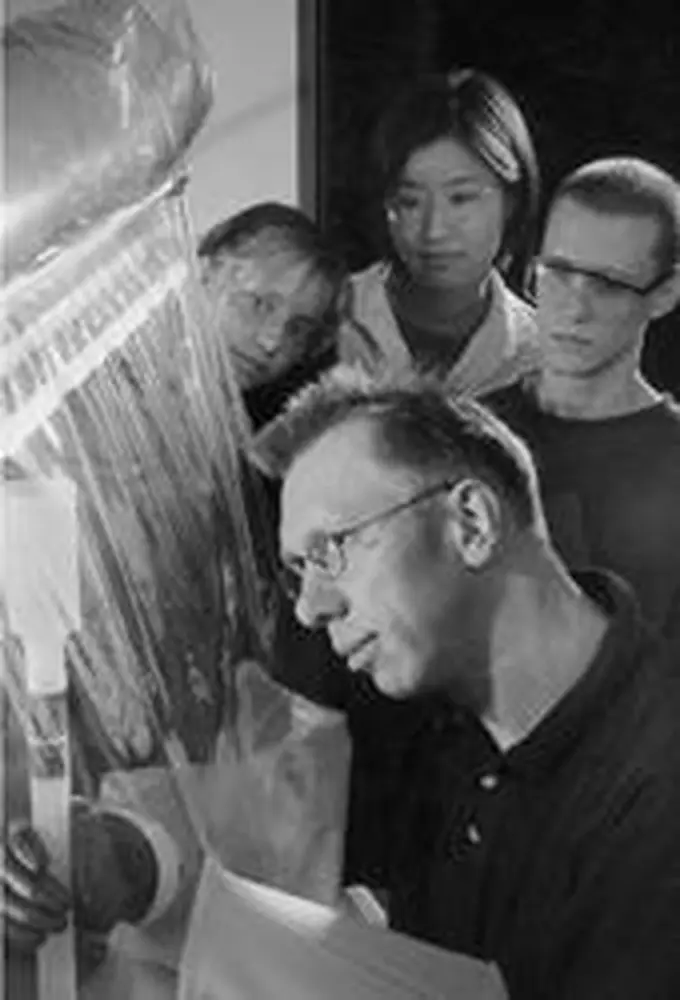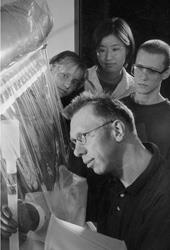

Nisin, a powerful, naturally occurring antibiotic, has been created in a test tube for the first time, opening the door to variations that may become important new weapons in the battle against infections in humans. This groundbreaking research comes from a University of Illinois team led by LAS researchers Wilfred van der Donk in chemistry and Satish Nair in biochemistry.
Creating nisin in a test tube is a crucial step "in the never-ending search for blockbuster antibiotics," said University of Pennsylvania chemist David W. Christianson, writing in Science magazine. As he put it, the five microscopic rings that make up nisin's structure may very well prove to be "golden."
According to van der Donk, nisin packs a deadly one-two punch that knocks out bacteria by punching holes in bacterial cell membranes and binding to essential molecules in disease-causing bacteria. Its five "thioether rings" account for this unique ability.
Nisin has been around naturally since antiquity, and it has been used as a food preservative since the 1950s. But the key to its appeal is that even after all of those years, bacteria have had a hard time overcoming its antimicrobial activity.
Scientists and medical professionals have become increasingly concerned about the ability of some bacteria to develop resistance to even the most potent antibiotics. But nisin offers hope. Scientists might be able to use it to create a variety of designer antibiotics that make it even harder to be resisted by the most cunning bacteria.
Nisin is part of a large family of compounds called "lantibiotics," van der Donk says. All of them are candidates for being bioengineered into new pharmaceuticals.
The LAS team also unraveled some of the mystery of how nisin is created in nature-an almost magical process, van der Donk says. Researchers showed that one protein, known as NisC, is responsible for developing the five rings required for nisin's antibiotic powers. In addition, scientists in Nair's laboratory determined the three-dimensional structure of this protein.
Nisin has never been used before to treat infections in humans because it is not stable in the human body, due to the body's neutral pH. But if new variations are stable at a neutral pH, nisin could be life-saving.
The research was primarily funded by the National Institutes of Health.
To read more about antibiotics and the growing bacterial resistance to these infection-fighting agents, see Good Bacteria Gone Bad.